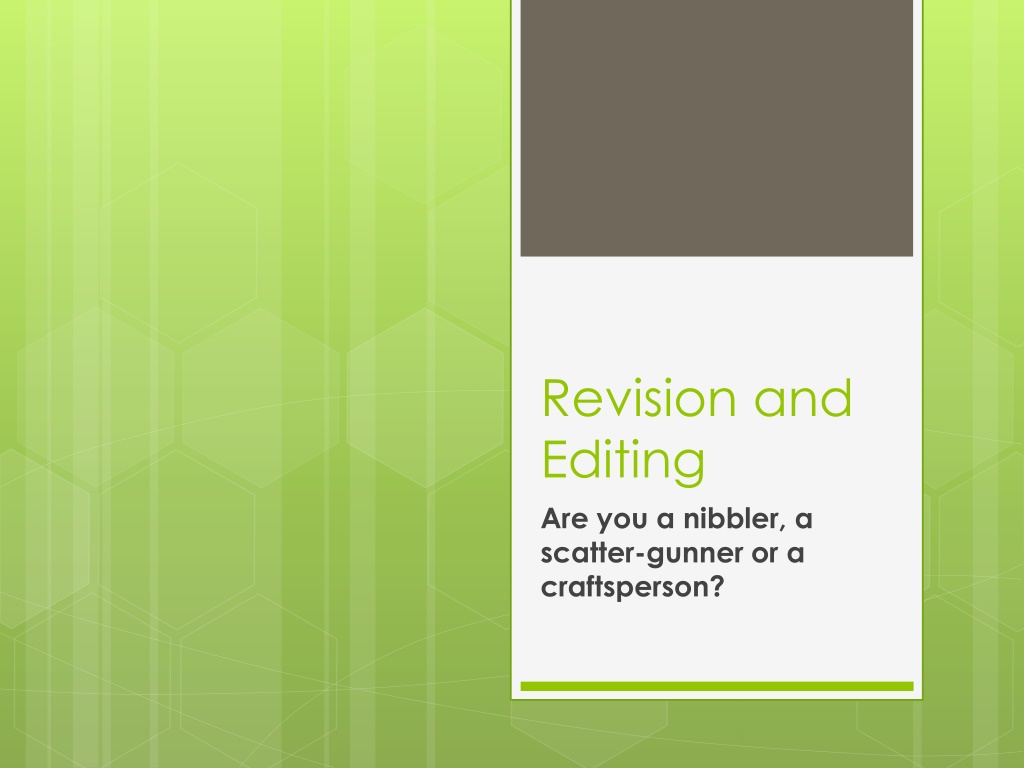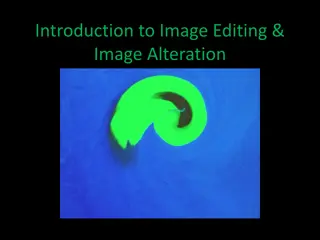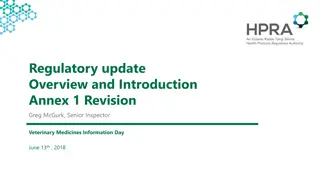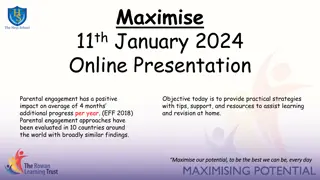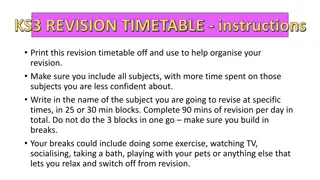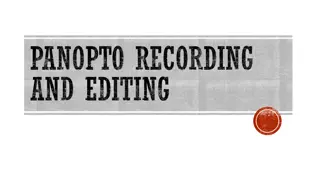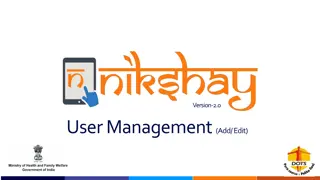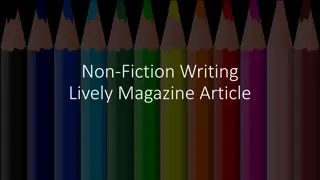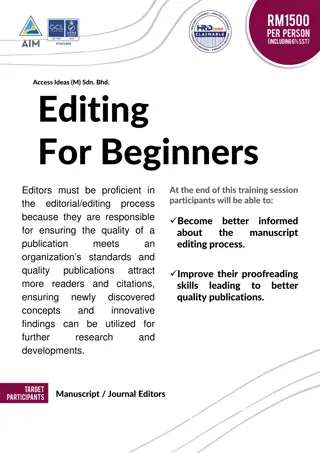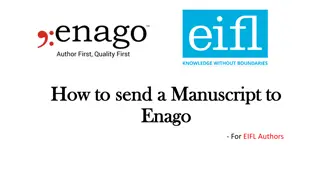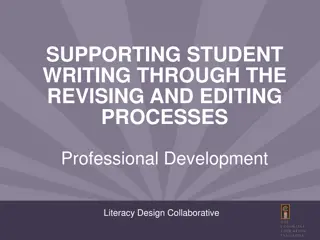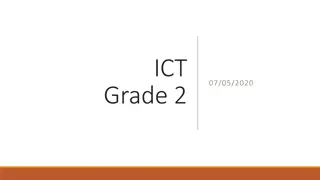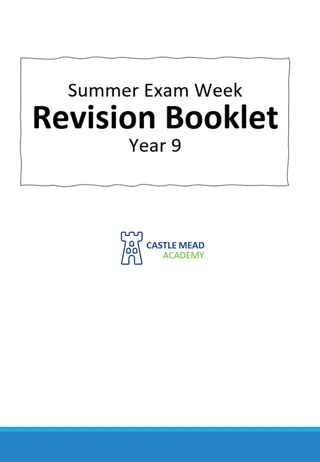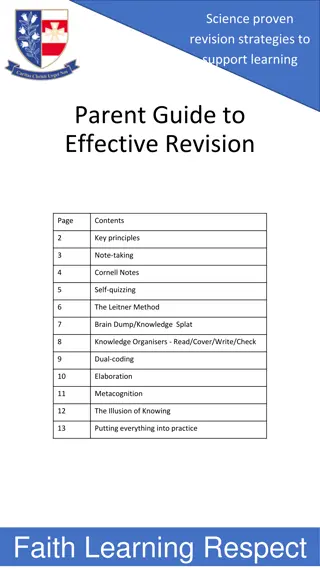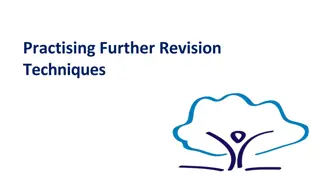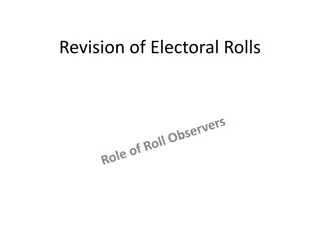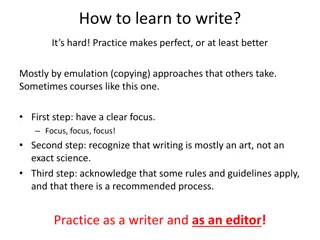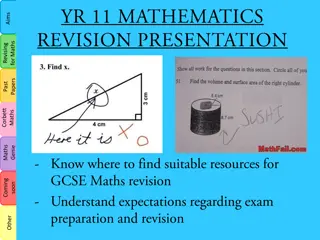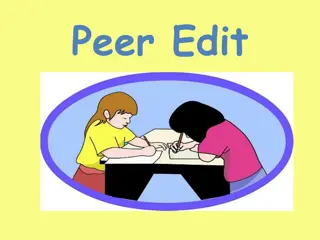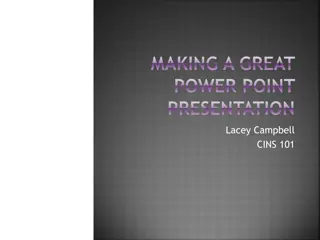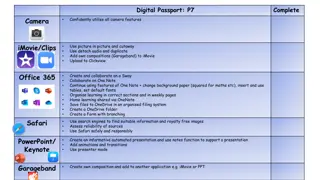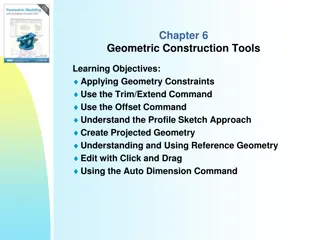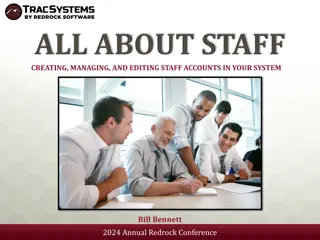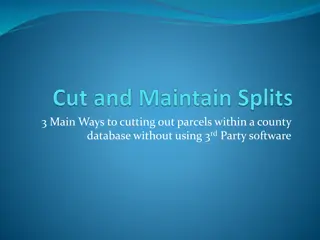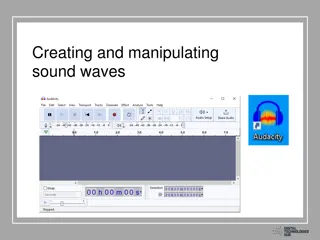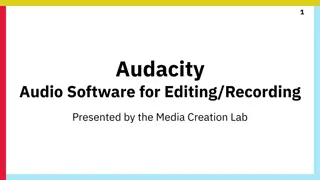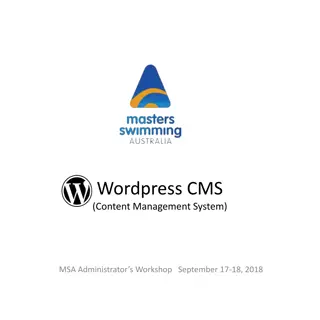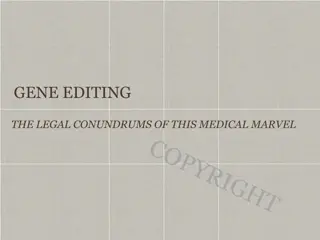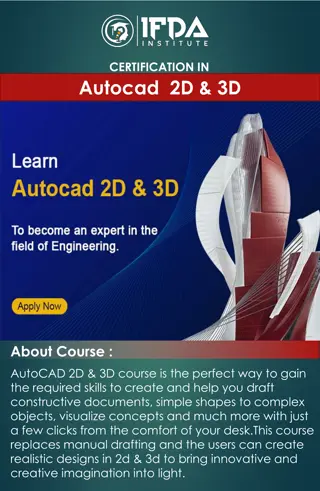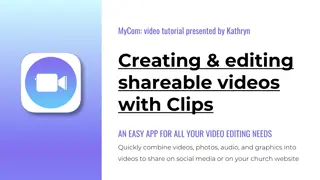Mastering the Art of Revision and Editing
Transitioning from a rough draft to a polished piece involves multiple revisions. Learning effective revision strategies is crucial for crafting reader-ready content. This process requires time, effort, and a critical eye to address structural issues, enhance clarity, correct errors, and improve cohesion. Embracing the art of revision, making deep cuts, staying rational, and leaving room for improvement are key elements in honing your craft.
Uploaded on Sep 24, 2024 | 0 Views
Download Presentation

Please find below an Image/Link to download the presentation.
The content on the website is provided AS IS for your information and personal use only. It may not be sold, licensed, or shared on other websites without obtaining consent from the author. Download presentation by click this link. If you encounter any issues during the download, it is possible that the publisher has removed the file from their server.
E N D
Presentation Transcript
Revision and Editing Are you a nibbler, a scatter-gunner or a craftsperson?
Revision: Part of the Plan For most of us, making the transition from a text that helps you to a text that helps the reader takes multiple iterations. It is nearly impossible to craft a reader- ready first draft. Learning some good principles of revision and editing can be helpful; leaving too little time to revise is not.
You can learn how to revise Revision doesn t come naturally Think of it as a craft and not an art this means you can consciously cultivate it Leave yourself enough time to slow down and see what you need to see Revision is not proof-reading. Don t try to proof and revise at the same time.
How to Revise 1. Broad structural issues 2. Clarity 3. Sentence-level errors 4. Cohesion problems
1. Broad structural issues Do a reverse outline. Be ruthless - it s easier early in the process Cut things you needed to write (to clarify your thinking) but that don t need to be read.
Deep cuts - Ouch! Attachment to our own writing often means we leave bits in because we can t bear to part with them or can t bear to see a document shrink instead of grow. It s very hard to take a draft to the next level when we haven t cut the parts that aren t working Editing, especially at the early stages, requires courage and a great willingness to jettison material. If you found it hard to put the words on paper in the first place, deleting them can be genuinely painful, so...
Stay rational... Think more broadly about the purposes of writing - We don t write just to satisfy a word count or to show off, we write to be understood Was that beautiful paragraph written for you (to work out your thinking), or for your reader (to help them understand the argument)?
But leave a thread... The delete key may be too extreme Create a place to save your out-takes Knowing that they are there gives courage for more ruthless editing In the end, your writing will thank you for developing the habit of letting go!
2. Clarity Look for superfluous words and undue complexity cut them out! (Pay attention to the start of sentences). Have you distanced yourself from your ideas with awkward expressions, weak verbs, and unclear subjects. Look for where you sound self-consciously academic. Can you be more frank and clear?
3. Sentence-level errors Look for errors - Things you know you do wrong all the time Things you know people commonly get wrong (subject-verb agreement, repetition of words, ambiguous reference, or punctuation) Ask someone to proof read if for you
4. Cohesion problems By this point, we ve made a lot of changes, so we have to make sure it all coheres. With all this revision, it s inevitable that new inconsistencies and infelicities will have been introduced. Take a step back, then read it all through again for flow, cohesion and sense.
A revision cycle..? 1. Broad structural issues 2. Clarity 3. 4. Cohesion problems Sentence level errors
Questions to ask (your supervisor) to polish your revised draft Overall coherence: Is there a clear and discernible argument or structure to your writing? Flow between sentences, paragraphs, sections: Have you found the optimal order and then signalled that order to your reader? Word choice: Have you used apt vocabulary? Sentence structure: Are your sentences easy for the reader to follow? Tone: Have you engaged your reader while still conforming to academic writing conventions? Economy: Have you avoided distracting digressions or general wordiness?
The Joy of Revision... Learn the craft of revision When you know you can fix the problems that are inevitably created during composition, you write more freely, confidently and quickly!
